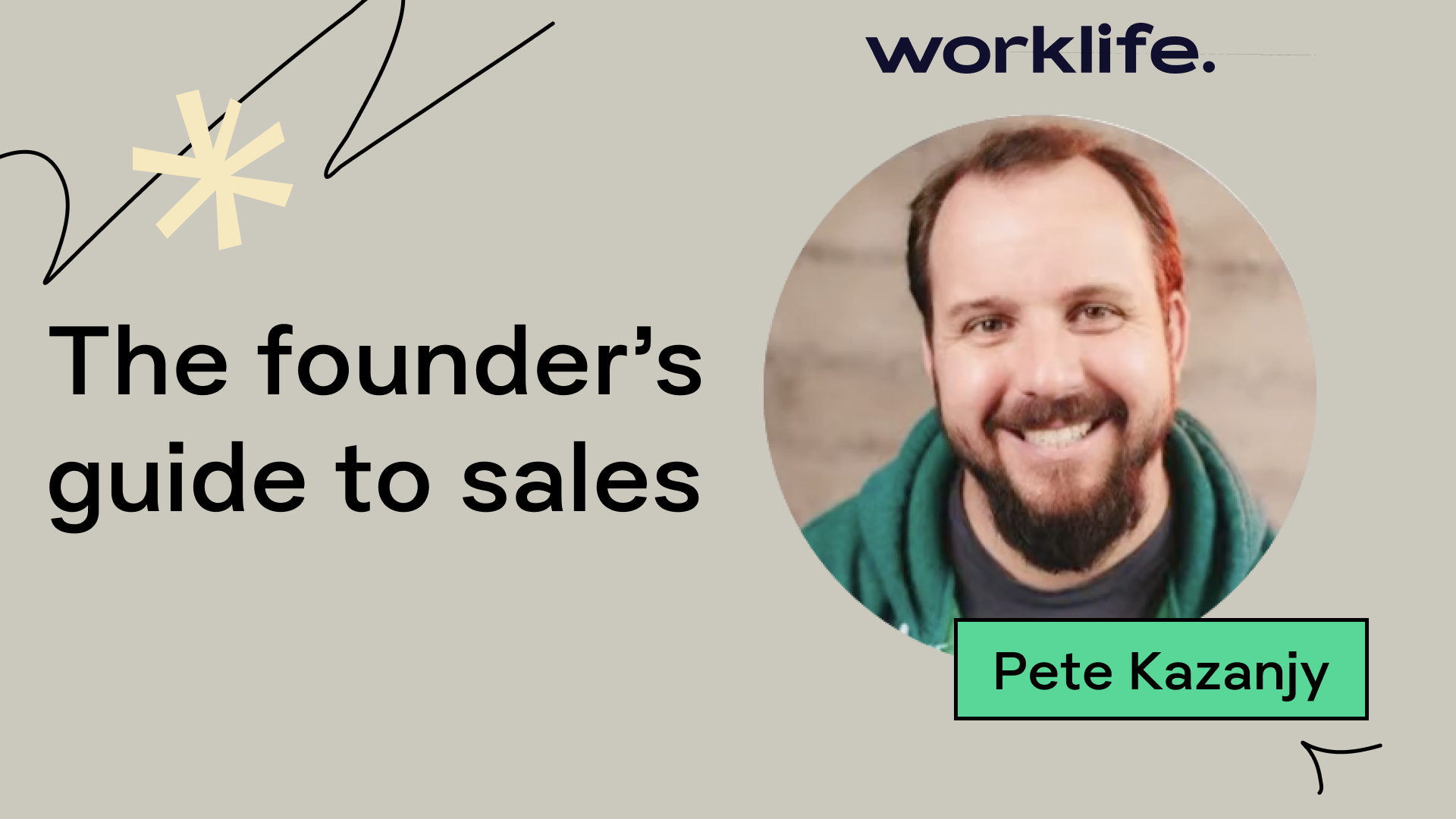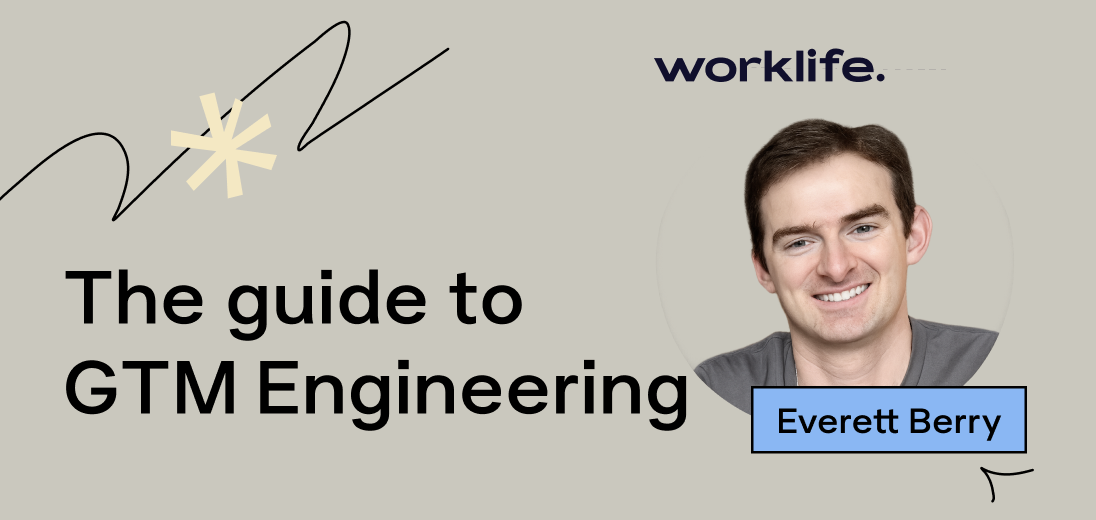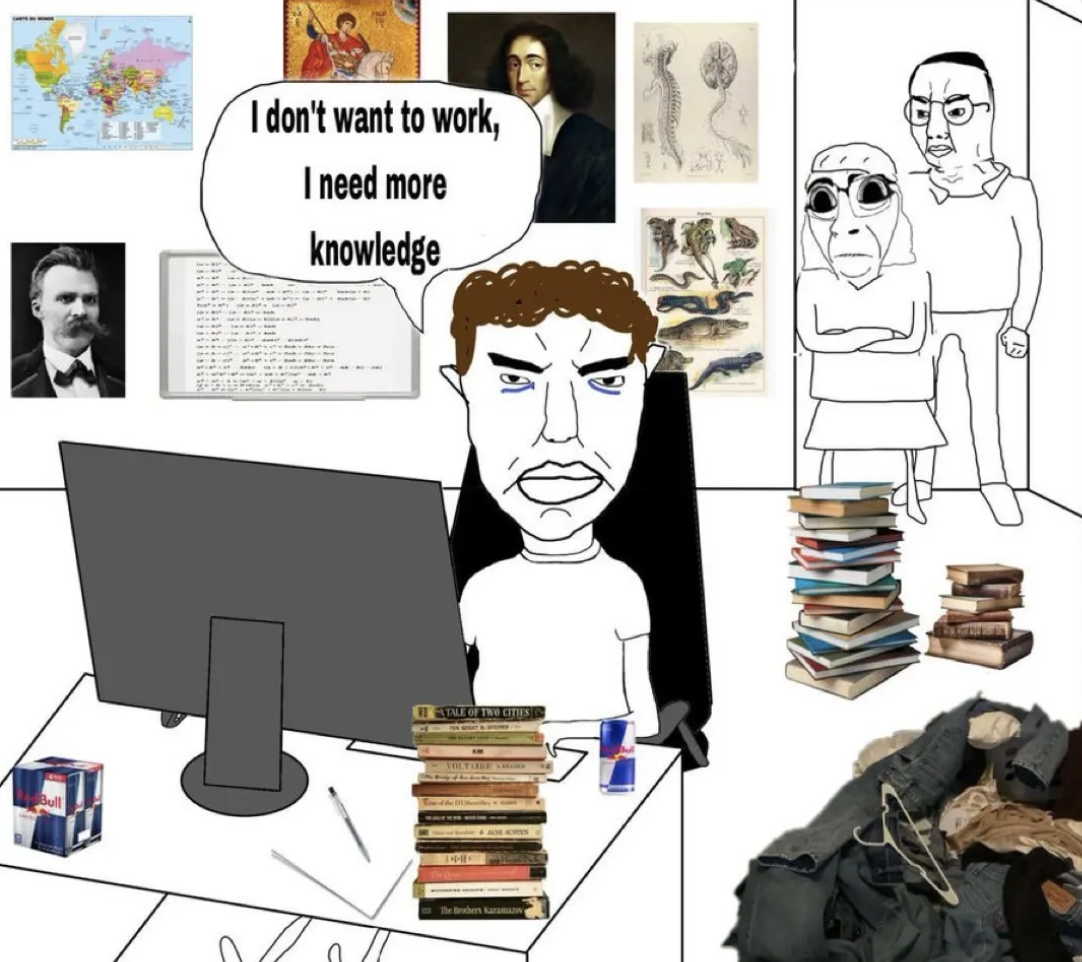This talk was originally presented at Web Summit. You can download the full deck here.
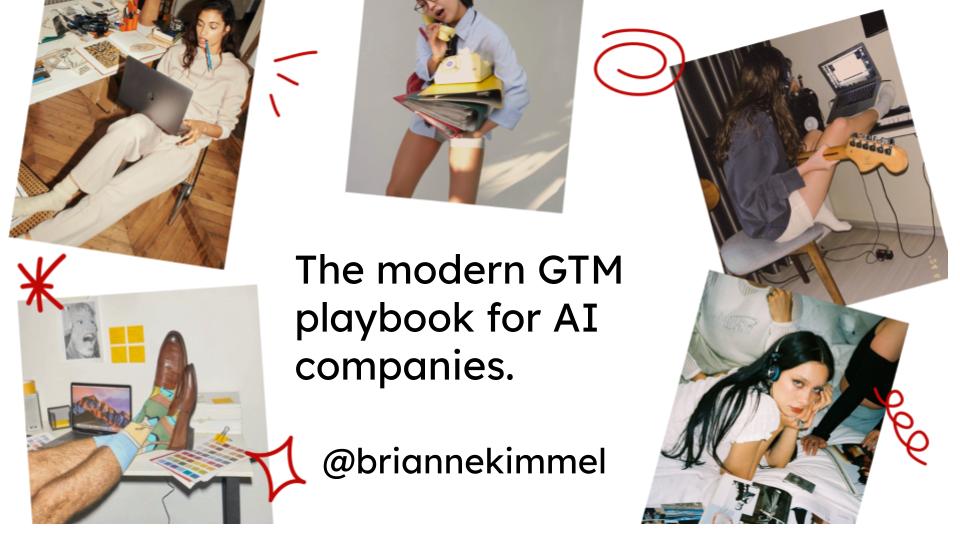
As vibe coding unlocks the ability for anyone to start a company and AI-native companies are on track to become trillion-dollar businesses, the traditional SaaS playbooks are no longer relevant. Companies need to figure out how to design for both product velocity and GTM intensity. In this discussion, Brianne will share best practices to scale business with in-depth case studies from the fastest-growing companies in Silicon Valley.
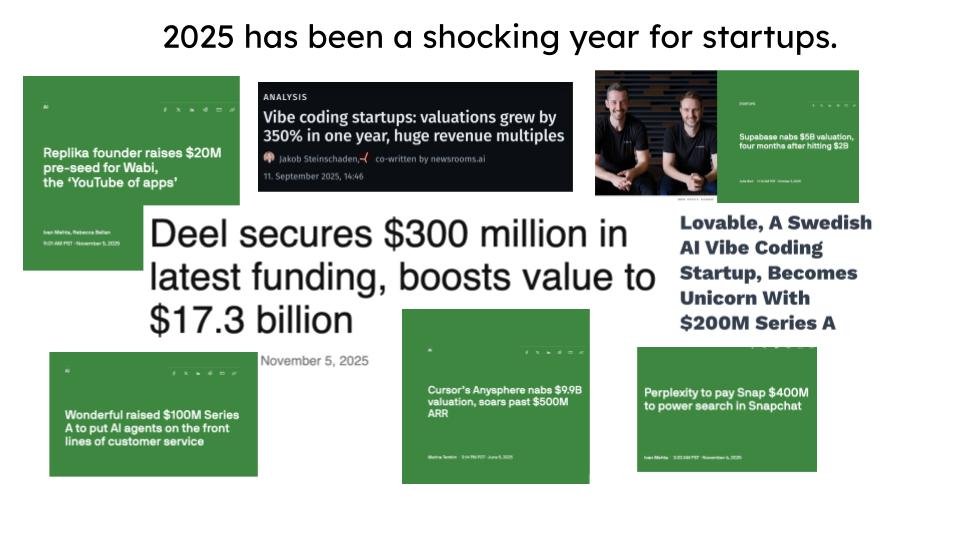
As we look back on all of the headlines this year, 2025 a shocking year for startups. In Silicon Valley many of the traditional best practices for fundraising no longer make sense for early stage companies. We've seen a $20M pre-seed round, well-funded startups raising another monster round just a few months after their last (Supabase's valuation grew from $2B to $5B in only four months), and vibe coding as a category grew 350%.
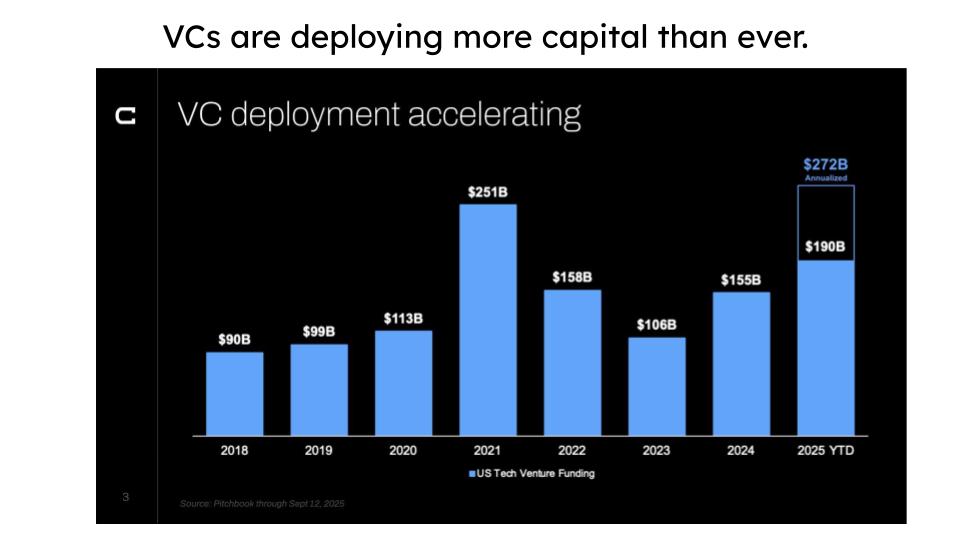
There's no doubt VCs are deploying more capital than ever. This year alone, VCs are expected to deploy $272B. Even more than 2021, a shockingly busy year for investors as the pandemic accelerated growth in businesses that enabled remote work, virtual healthcare, and all of the services brought online to keep the global economy afloat.
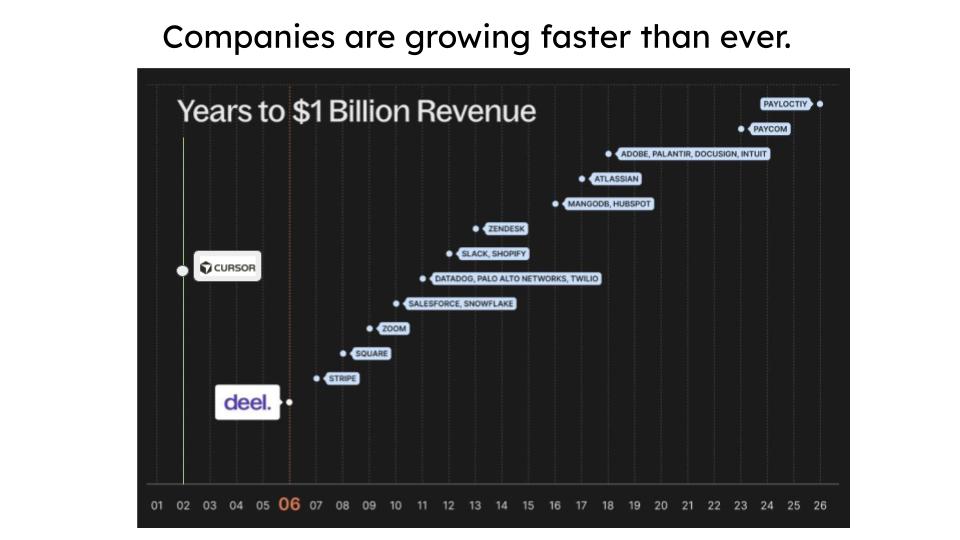
While all these headlines seem outrageous, this very well may be the new normal as companies are growing faster than ever and investors are eager to put as much money as possible into companies that are quickly scaling. In the previous era of B2B, it would take a SaaS company about 10 years to hit $1B ARR. Today, we are in the early beginning of $1B+ ARR in 2 years or less.
Cursor, the fastest company to cross $1B ARR, is now the hero example of a company that has scaled to unprecedented new milestones with a lean team, a small office tucked away from the startup dense neighborhoods in San Francisco, and a culture that's described as "a haven for self-motivated individual contributors.”

One of the most fascinating parts of this current tech cycle is the number of breakout companies that have not only achieved venture scale, they've done it in record time. Vibe coding as a category has an impressive number of competitors all of which are growing at an impressive rate. We're in a golden era for apps as companies for the first time are just as focused and intentional when they think about monetization as they are with building and scaling a great product.
As vibe coding has gone more mainstream, we see both anyone who wants to build something (with no previous technical experience) and highly technical operators (who love the productivity gains and more intuitive/enjoyable way to build.

When products become easier to build, then more competition will follow. Not to mention with all of the capital currently being pumped into the ecosystem, for every category creating product that's backed by a top-tier firm there will be copycats that can easily raised from firms that missed out on the predecessor.
While leading competition-related efforts at Zendesk, I built programs to ensure our suite of products had feature parity, our sales reps were empowered with talking points to win customers from our competitors, and every aspect of our GTM was designed to win (including our pricing, which became the catalyst for starting the Zendesk for Startups program). You can learn step-by-step how to design competitive programs in my guide on Clearbit's blog here.
In terms of the sheer volume of net new companies, YC alone invested in 700 companies this year alone with over 80% in AI and the average raise was $2.4M.
.jpg)
Round sizes continue to be one of the most debated topics by VCs and founders are left to choose their own path based on a number of factors:
1. Appetite to build a big business
2. Ability to leverage a large fundraise to attract experienced talent from high-growth companies with plenty of upside
3. Allocate a larger portion of the round to M&A to buy out competition, consolidate the category, and scale faster than expected with more engineers to build new features and the immediate opportunity to upsell customers with a newly acquired product that's complementary to core product.

When Deel announced its recent $300M round at a $17.3B valuation, their CEO Alex Bouaziz wisely said their #1 reason for their success is "everything is sales."
"Recruiting is sales. Fundraising is sales. Retaining your best talent is sales. Dating is sales. And sales is sales.A founder’s effectiveness = (technical skill × ability to sell)."
Gone are the days where you could stay heads down building and figure out how you plan to price, package, and distribute your product after several months of building.
Even sophisticated companies like Cursor have made GTM related mistakes in the beginning that have caused some reputational damage in the beginning and motivated the team to make it a greater priority moving forward.
In 2025, Cursor's pricing included
- Unlimited completions
- 500 “fast premium” completions per month
- Unlimited “slow premium” completions
However, the term "unlimited" created a lot of confusion. As Cursor made changes to their pricing as they quietly imposed a new compute-based credit limit model. Users only found out after running out of their assumed quota. This switch, without adequate explanation, led to an uproar. You can read more about it here.
Pricing in particular is an area where it's become increasingly complex and as you scale you'll go through many iterations of pricing plans ie: Figma went through a massive pricing overhaul in 2025, which demonstrates just how complicated plans become as you need to retain customers, scale revenue without increasing churn, and introduce new ways for the product to expand inside a company without negatively impacting adoption, usage, and even customer satisfaction.
When it comes to early GTM, each decision requires careful consideration and a healthy amount of debate internally and with experienced GTM advisors. This is where Worklife spends the majority of our time, both helping companies with step-by-step decisions and building the right network of experienced operators who can give timely, sound advice based on their lessons learned scaling the fastest growing companies.
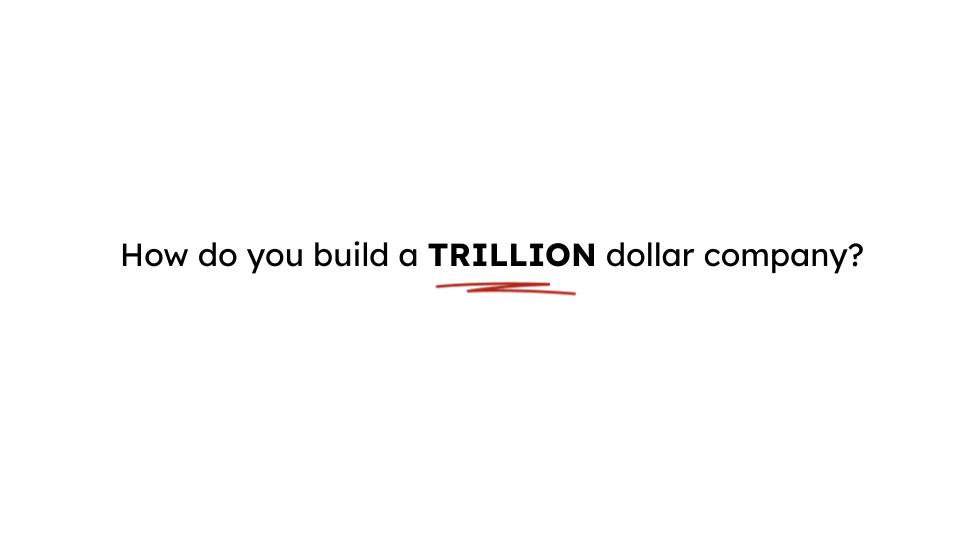
With the rising expectations from investors and need for teams to find PMF almost immediately and move faster than their competition, many companies will hit $1B ARR but very few will become a trillion dollar business.

I'm Brianne Kimmel and I've spent the last decade helping companies with GTM. At Zendesk, I worked on the GTM strategy team to develop programs to scale to $1B ARR through a coordinated effort to expand from a single core product (primarily self-serve) to a suite of multiple products that could be bundled and sold to enterprise customers.
As a GTM expert focused on scaling both self-serve products and helping companies with zero to one sales, customer success, developer relations, and all aspects of GTM, I built a track record as an angel investor and advisor to many of the fastest growing startups in Silicon Valley.
Some common ways I help companies:
- Growth engineering: designing your product for growth
- Designing your first customer advisory board
- Hiring, onboarding, and retaining your early GTM hires
- Zero to one community building
- Pricing and packaging
.jpg)
In 2019, I founded Worklife, a venture capital uniquely designed for the new era of builders, creators, and individual contributors. Our first fund backed by the founders Cameo, Twitch, Spotify, YouTube, and Zoom was designed to write the first check to operators rethinking how software can change work for the better.
How to build without any coding experience, how to finance and scale your business with no investor network, and how to rethink how companies, teams, and ICs can leverage new tools at work to dramatically impact their productivity and performace at work.
.jpg)
At our core is education, community, and challenging the status quo.
We've written over 120 blog posts to help creatives start companies and companies sell to anyone with an idea. Our thesis in 2019 has proven to be true today, in the future anyone can be a founder... whether it's a podcast, a newsletter, a food truck or restaurant operating out of your home kitchen, we're seeing a new wave of entrepreneurshop that's more creatvie and fleixible than ever.
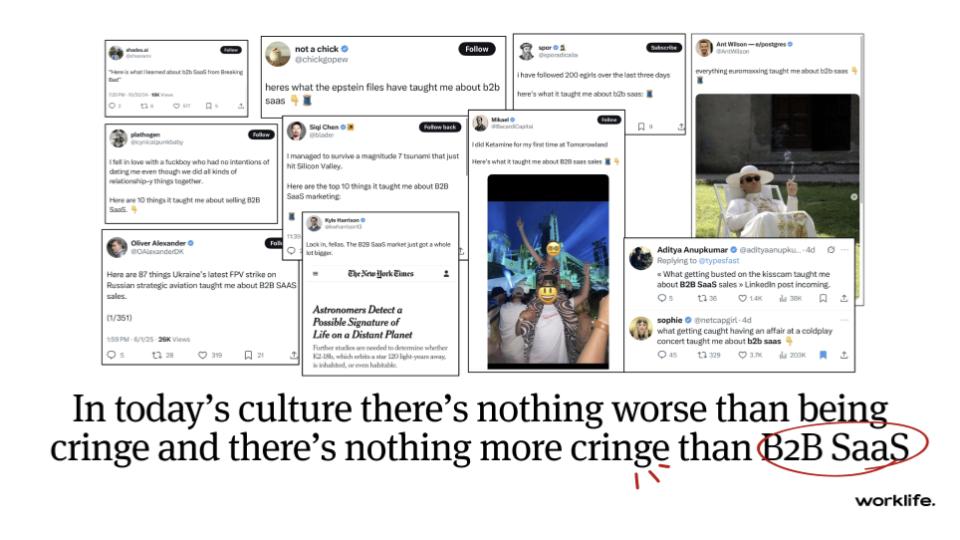
One of the major reasons I started the firm and decided to invest heavily in building a brand, a community, and designing unique experiences is B2B had become incredibly cringe over the years. It's important for founder's to publish on
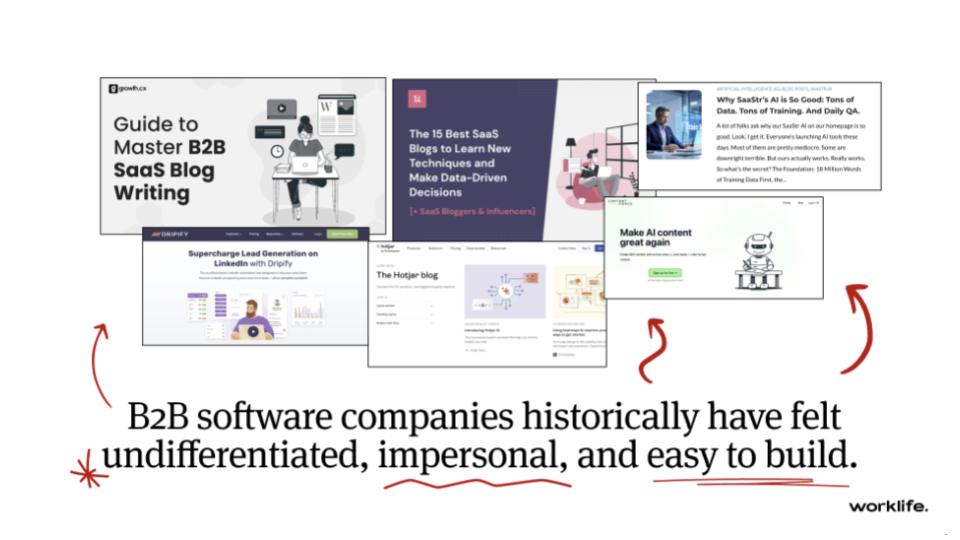
It's one of the most overused memes on social media because as B2B SaaS became increasingly corporate there was no shortage of corny posts on LinkedIn, annoying sales emails flooding your inbox, and lack of personality and differentiation across the board.
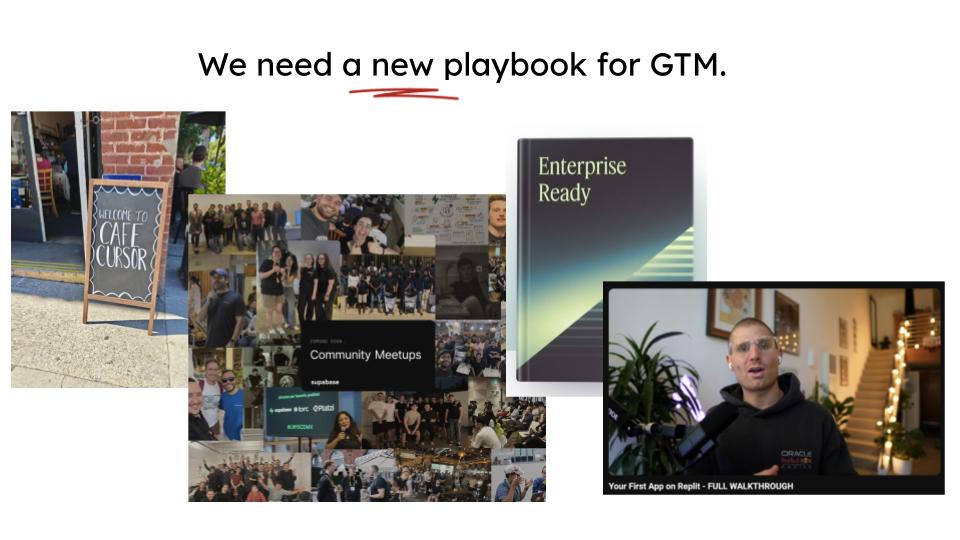
We need a new playbook for GTM. One that's uniquely designed for engaging with potential users in a way that's modern, relevant, and not cringe. The old school way of doing things won't connect with people today, especially as we see people from all industries vibe coding their way through all types of business opportunities.
.jpg)
This playbook also can't reply on the old school way of thinking about hiring. There's no shortage of good sounding advice on who to hire next, however 90% of this advice is now completely irrelevant. As early stage companies are the first to adopt AI across every job to be done, many roles and responsibilities are now converging and traditional job titles are completely irrelevant. It's important to take an honest look at what needs to be built and assess how you can deliver results with the fewest amount of full-time employees.

In the old school way of thinking about GTM, founders would stay focused on building a product and once the product was ready they'd bring run a complicated process to find the right sales person. Sales recruiting has changed dramatically in light of AI, many companies are bringing on a full-time salesperson much sooner than expected. A seasoned salesperson not only understands product, but can work closely with the founder on everything from customer development calls, pricing and packaging, and lay the foundation for future sales and customer success hires.

Today we're seeing entirely new functions and ways that companies need to be structured to scale. Here's a deep dive on GTM Engineering, the first AI-native function that every company will need to scale.
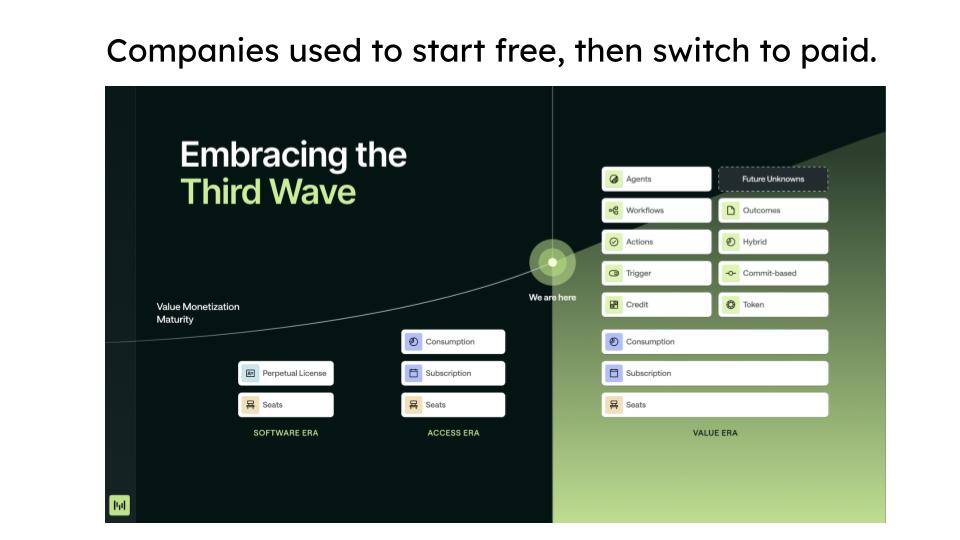
In addition to structuring your company in a way that's designed for growth, price cannot be an afterthought. Companies used to launch with a free product and convert users to paid over time. This created a low NPS experience, high churn, and left a bad taste in your earliest believers mouths. Now, we see companies implement multiple forms of monetization to ensure your company is generating revenue from the beginning.
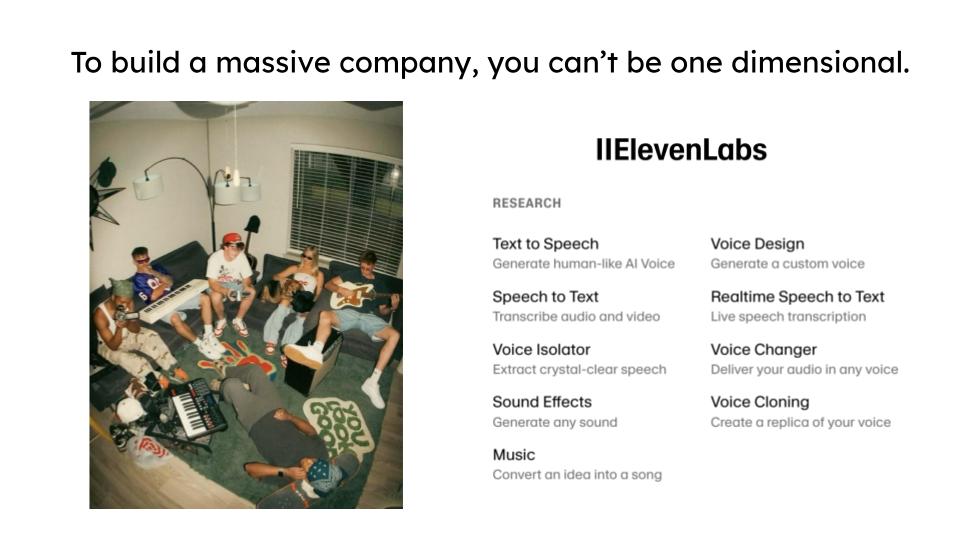
In the same way that individuals are thinking about multiple different revenue streams and the world is increasingly designed around multipreneurship, companies also need to think multi-product. It used to be said that companies needed to "earn their way to becoming a platform." Today, every company needs to think multiple monetizable products.
Thinking multi-product serves many purposes:
- It expands your product footprint and enables you to sell to multiple ICPs, upsell and cross-sell complementary products for the same buyer
- It boxes out the competition and creates an opportunity to sell one product (land the account, add the logo to your homepage, gain more trust and credibility) and expand (strategically grow the account)
- It creates momentum: with each new product you gain more mindshare with announcements, product education, IRL product education and onboarding, and consistent marketing and press

As AI companies are creating the new norms for product and engineering, the same must happen for GTM. We can't rely on the boring old ways that felt corporate and cringe. Today, we're seeing AI companies go global without the complexities of an office or inflated headcount. We see teams engineering their GTM with the same systems thinking as a technical team. And we see companies think multi-product and multi-pricing to cover more surface area and command a larger round size and valuation to ship at a much faster rate.


